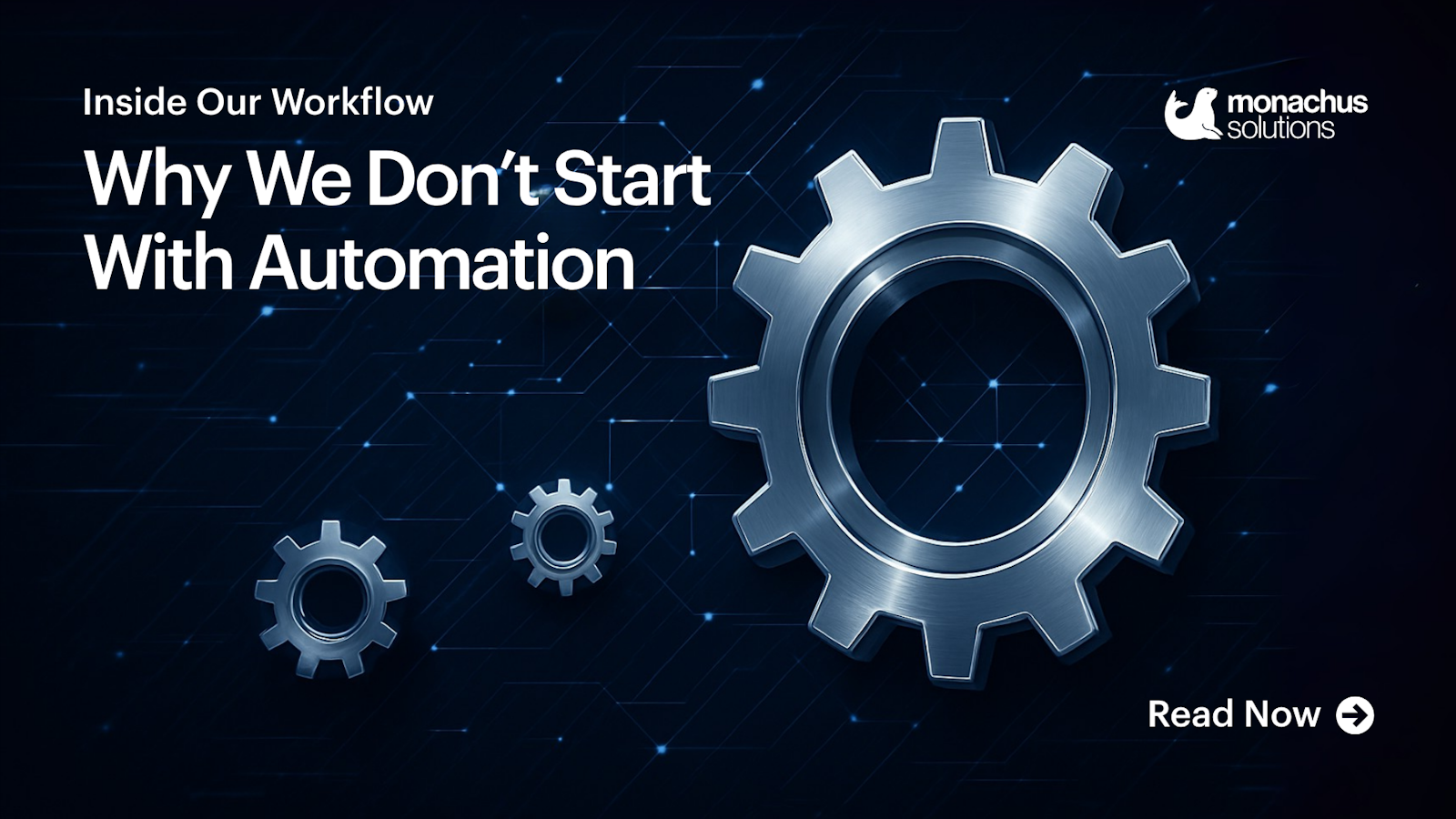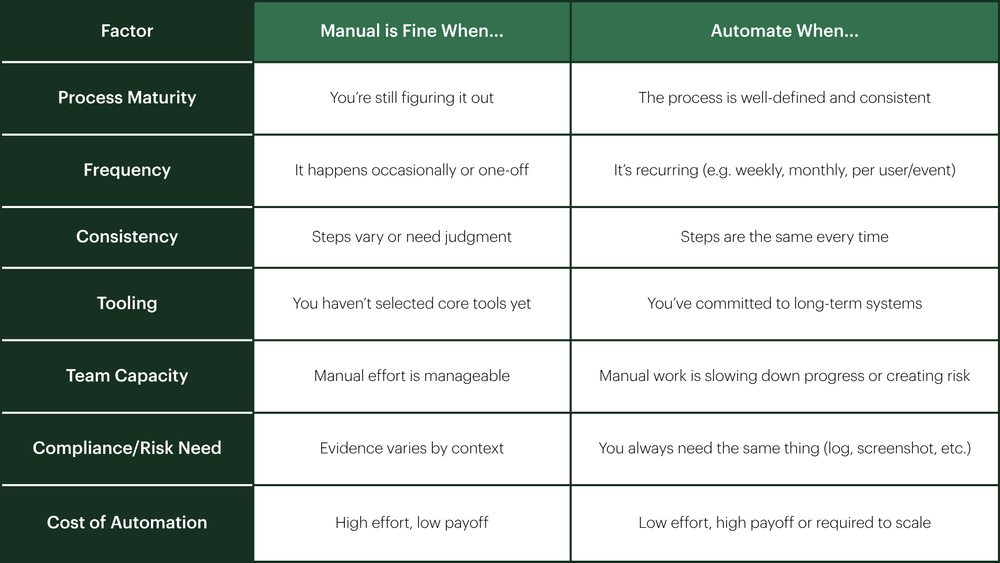Inside Our Workflow: Why We Don’t Start With Automation

A look into how Monachus uses a manual-first approach to build smarter, more resilient workflows for startups.
At Monachus Solutions, we work like many of the startups we support - fast-moving, resource-conscious, and often building the plane while flying it. Over time, we’ve learned that automation isn’t the starting line; it’s the milestone you reach after doing the work manually, testing, and refining.
In our experience, trying to automate too soon can lead to brittle systems, overcomplicated tools, and missed opportunities for learning. That’s why our workflow philosophy is simple: manual first, automate later.
Manual First Isn’t a Mistake - It’s a Strategy
In the early days of building Monachus, we did a lot manually. We still do, in areas we’re evolving. That’s not because we lack tools or know-how it’s because manual work gives you insight.
Before you automate anything, you need to understand:
What steps are essential
Where handoffs happen
Where people get stuck
What changes often, and what stays consistent
It’s only once you see patterns that you can confidently define the process, layer on tools, and then automate the parts that are truly repetitive.
Where Automation Makes (and Doesn’t Make) Sense
We’ve seen well-intentioned startups lock themselves into brittle workflows by automating too soon. Two real-world examples:
Onboarding flows: It’s tempting to build a fully automated onboarding flow early, especially when it feels repeatable. But in reality, onboarding almost always evolves. The tools change. The team changes. The steps change. When everything is automated from the start, even small tweaks can become painful. Instead, we recommend running it manually a few times, documenting what’s working, and only then translating it into automation.
Internal evidence tracking: For companies going through frameworks like SOC 2 or ISO 27001, it’s tempting to automate evidence collection right away. Sometimes it works (e.g., pulling system logs). But often, controls vary across teams or clients. In those cases, building automation before you’ve standardized the process adds more friction than it removes.
The Monachus Rubric: When to Automate (and When Not To)
To help our clients think through this, we use a simple internal rubric:

Evolve Your Process Before You Automate It
The most important thing to remember?
Your systems should evolve as your business does. You don’t need the most expensive tool or complex automation out of the gate. You just need something that works today and a mindset that you’ll improve it over time.
At Monachus, this mindset underpins everything we build. We help startups define what works now, with a clear path to improve and scale as they grow.
Automation with the advent of AI Tools
AI tools are beginning to shift the boundaries of what’s possible in workflow automation and that’s likely to reshape how we apply our own rubric in the future. Historically, automation has relied on processes being clearly defined, repetitive, and rule-based. But AI changes that equation. Emerging tools are increasingly capable of handling tasks that once required human judgment like interpreting context, making decisions based on nuance, or adapting to loosely defined inputs.
In other words, automation may no longer need a fully mature process to be valuable. That doesn’t mean our rubric no longer applies; it means the criteria may evolve. We’re not rewriting our approach just yet but we’re paying attention. The impact of AI on startup systems is still unfolding, and in many cases, the outcomes are still to be determined. What’s clear is this: AI will change how and when companies automate. It won’t eliminate the need for thoughtful system design but it will open new doors for automation earlier in the process than ever before.
Need Help Figuring Out What to Automate?
We love helping startups simplify, systemize, and scale. If you're trying to streamline a process or unsure whether it’s time to automate - please reach out. We’re always happy to walk through the options and help you avoid overengineering too soon.
Get in touch or explore our services to see how we can support your growth.